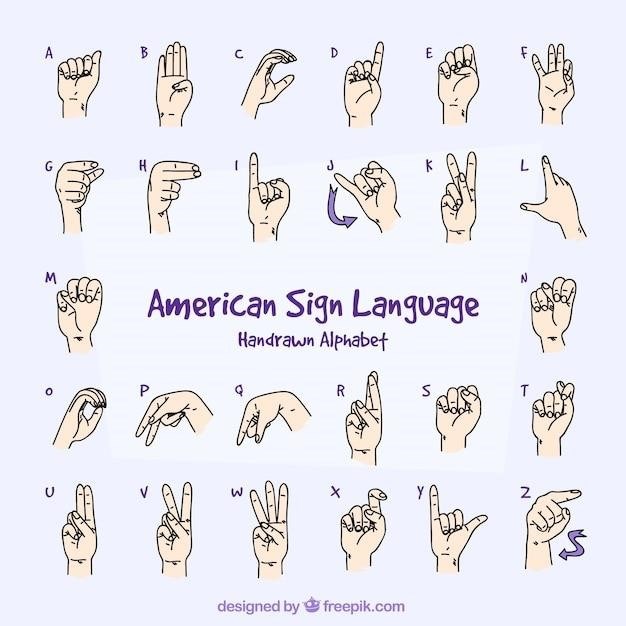
The MSF Written Test is an essential component of motorcycle safety training, designed to assess knowledge and promote safe riding practices. It serves as a foundational step toward obtaining a motorcycle license, ensuring riders understand critical safety concepts and regulations.
1.1 What is the MSF Written Test?
The MSF Written Test is a multiple-choice examination designed to evaluate a rider’s knowledge of motorcycle safety principles, traffic laws, and safe riding practices. It covers essential topics such as risk management, motorcycle controls, and emergency procedures. The test is a crucial step in obtaining a motorcycle license and ensures riders are well-prepared for the road.
1.2 Importance of the MSF Written Test
The MSF Written Test is crucial for ensuring riders possess essential knowledge to operate motorcycles safely. It evaluates understanding of traffic laws, risk management, and emergency procedures, reducing accident risks. Passing the test is often a licensing requirement, promoting responsible and informed riding practices.
Key Concepts Covered in the MSF Written Test
The MSF Written Test covers essential motorcycle safety topics, including traffic laws, risk management, and emergency procedures. It emphasizes vulnerability, visibility, and judgment to ensure safe riding practices.
Vulnerability, visibility, and judgment are critical concepts in motorcycle safety. Motorcyclists are more vulnerable due to the lack of protective structures. Visibility is crucial, as riders must be seen by other drivers to avoid accidents. Judgment involves making sound decisions, such as maintaining safe distances and anticipating hazards. These elements are key to reducing risks and ensuring safe riding practices. Preparing for riding risks involves understanding personal limitations, wearing proper gear, and staying mentally alert. Riders should embrace risk acceptance, ensure physical and mental readiness, and know their motorcycle’s capabilities. Awareness of riding conditions and understanding one’s abilities are crucial. These steps help mitigate potential hazards and enhance overall safety on the road. The MSF Written Test Answers PDF provides convenient access to study materials, helping riders prepare effectively for the exam. It offers clear answers and practical insights, making it an invaluable resource for achieving success on the test. The MSF Written Test Answers in PDF format offers numerous advantages, including easy accessibility, portability, and the ability to study offline. PDFs are compatible with all devices, allowing riders to review questions and answers anytime, anywhere. This format also enables quick searching and printing, making study sessions more efficient. Additionally, PDFs retain formatting, ensuring clarity and readability. To maximize the benefits of MSF Written Test Answers in PDF format, use them as a study guide alongside official materials. Practice answering questions regularly to familiarize yourself with the test format. Simulate exam conditions to assess readiness and identify weak areas. Review incorrect answers to improve understanding and retention. This method ensures comprehensive preparation and boosts confidence for the actual test. The MSF Written Test includes questions on motorcycle safety, risk management, and traffic laws. Topics like vulnerability, visibility, and judgment are frequently covered, ensuring riders understand key safety concepts. Common questions address risks such as vulnerability, visibility, and judgment. Riders are asked about protective gear, emergency procedures, and strategies to enhance safety. These inquiries ensure a comprehensive understanding of motorcycle safety principles, preparing riders for real-world scenarios and promoting responsible behavior on the road. Example answers provide clear explanations to questions like, “Why is motorcycling riskier than driving a car?” with responses such as “Vulnerability, Visibility, and Judgment.” Additionally, questions about countersteering techniques are answered with specific methods like applying pressure to the handgrip to lean into the turn. These examples help riders understand correct safety practices and improve their test preparation. To prepare effectively, study the official handbook, practice with online tests, and review key concepts like motorcycle controls and safety strategies regularly. Consistent practice ensures readiness. Utilize the official MSF handbook, which covers essential topics like motorcycle controls and safety strategies. Additionally, download MSF Written Test Answers PDFs for practice questions and answers. These resources provide a comprehensive understanding of safety concepts and help identify areas needing more review. Regular use of these materials ensures thorough preparation for the test. To excel in the MSF Written Test, simulate exam conditions by practicing with timed quizzes. Regularly review the official MSF handbook and PDF answers for familiarization. Focus on understanding key concepts like motorcycle controls and safety strategies. Use flashcards to memorize important terms and ensure consistent practice to build confidence and reduce errors during the actual test. Riding gear is essential for motorcycle safety, offering protection, comfort, and visibility. It minimizes injury risks and enhances control, making it crucial for responsible riding practices. Protective apparel is vital for motorcycle safety, reducing injury risks by absorbing impacts and shielding against road abrasions. Proper gear, including helmets, jackets, gloves, and boots, provides critical protection in crashes. Additionally, reflective and brightly colored materials enhance visibility, making riders more conspicuous to other road users. This gear is essential for minimizing potential harm and ensuring rider safety. When selecting motorcycle gear, prioritize materials like leather or Kevlar for durability and protection. Opt for brightly colored or retro-reflective apparel to enhance visibility. Ensure a proper fit for comfort and mobility, and consider weather-appropriate gear for varying conditions. Additionally, look for safety certifications like DOT or SNELL for helmets. Proper gear selection significantly reduces injury risks and improves overall riding safety. Mastering motorcycle controls and instruments is crucial for safe riding. Familiarize yourself with primary controls like the clutch, gearshift, and brakes, and understand their locations and functions. The primary motorcycle controls include the clutch lever, gearshift, front and rear brakes, and throttle. The clutch lever, located on the left handlebar, disengages the engine from the transmission. The gearshift, near the left footrest, changes gears. The front brake lever, on the right handlebar, controls the front brake, while the rear brake pedal, near the right footrest, operates the rear brake. Proper use of these controls ensures smooth and safe riding. Regular practice helps build muscle memory and coordination, essential for effective control of the motorcycle. Understanding each control’s function and location is vital for maintaining balance and control while riding. Primary motorcycle controls are strategically located for easy access and intuitive operation. The clutch lever is on the left handlebar, controlling gear engagement. The gearshift, near the left footrest, changes gears. The front brake lever, on the right handlebar, controls front braking, while the rear brake pedal, near the right footrest, operates the rear brake. Mastering their function enhances riding safety and control. Safe riding involves mastering techniques like countersteering, swerving, and group riding protocols. Continuous learning and adapting to road conditions ensure responsible and hazard-free motorcycling experiences. Countersteering involves applying pressure to the handgrip in the direction of the turn, causing the bike to lean and change course. Swerving requires shifting weight and steering sharply to avoid obstacles. Both techniques demand precise control, focus, and practice to execute effectively, ensuring rider safety in emergency situations. Regular practice enhances muscle memory and reaction time. Group riding requires coordination and communication to ensure safety. Riders should maintain a safe distance, use hand signals, and stay in formation. Avoid weaving and always be aware of others around you. Designate a leader to guide the group and establish a clear chain of communication. Regular check-ins and briefings can help prevent accidents and ensure a smooth ride for everyone. Handling emergencies requires quick decisions and knowledge of proper procedures. Stay calm, assess the situation, and take appropriate actions to minimize risks and ensure safety for all involved. In the event of a crash, remain calm and prioritize safety. Assess injuries, call for medical help if needed, and move to a safe location away from traffic. Document the scene, exchange information with others involved, and notify authorities. Stay composed to provide accurate details and avoid further risks. Proper actions can prevent escalation and ensure legal compliance. In emergency situations, remain calm and follow structured steps. Check for injuries, ensure the scene is safe, and call for medical help if needed. Secure the motorcycle to prevent further hazards and exchange information with others involved. Document the incident thoroughly and report it to authorities as required. Proper emergency procedures help minimize risks and ensure legal compliance. Understanding legal requirements is crucial for motorcyclists. This includes obtaining proper licenses, adhering to traffic laws, and being aware of penalties for violations. Compliance ensures safety and legality. To obtain a motorcycle license, riders must meet specific state requirements, including passing a written test, vision test, and riding evaluation. Many states require completing a motorcycle safety course or providing proof of liability insurance. Licenses may vary by state, with some issuing endorsements or classifications based on motorcycle type. Study materials and practice tests are available through DMV or MSF resources. Motorcyclists must adhere to all traffic laws, including speed limits, right-of-way rules, and helmet use. Penalties for violations can include fines, license suspension, or points on your driving record. Knowledge of these regulations is crucial for safe riding and is often tested in the MSF written exam. Familiarizing yourself with local traffic laws ensures compliance and reduces risks while riding. Adapting to road conditions like wet surfaces, gravel, or potholes is crucial for safe riding. Weather and visibility play significant roles, especially at night, requiring heightened awareness and caution. Riders must adjust their techniques according to varying road surfaces and weather. Wet roads reduce traction, requiring slower speeds and longer stopping distances. Gravel or sand demands cautious throttle and brake control. Potholes and debris necessitate swerving or slowing safely. Always maintain situational awareness and adjust your speed and position to match the road conditions you encounter. Night riding requires heightened awareness and caution. Use reflective gear to increase visibility and wear protective apparel. Reduce speed to compensate for limited visibility. Avoid staring at oncoming headlights to maintain night vision. Keep headlights clean and properly aimed. Be extra cautious at intersections and watch for pedestrians or obstacles. Regularly check mirrors and blind spots to stay alert and safe while riding at night. Physical fitness and mental alertness are crucial for safe riding. Ensure you’re in good health, well-rested, and free from distractions or impairments that could affect your judgment. Physical fitness is vital for safe motorcycling, as it enhances strength, endurance, and coordination. Strong physical conditioning helps maintain control of the motorcycle, especially during long rides or emergencies. Good health reduces fatigue, improving reaction times and overall safety on the road. Regular exercise boosts stamina, ensuring riders can handle the demands of riding with precision and confidence. Mental preparation is crucial for safe and confident riding. Techniques include visualization of riding scenarios, positive affirmations, and mindfulness to stay focused. Riders should cultivate a risk-aware mindset, assessing situations before acting. Regular practice of these techniques enhances decision-making skills, reducing stress and improving reaction times during critical moments on the road. Regular maintenance is vital for motorcycle safety, ensuring reliability and preventing mechanical failures. It involves checking essential systems and addressing issues promptly to avoid accidents. Regular maintenance checks are crucial for ensuring motorcycle safety and reliability. These checks include inspecting tire pressure, brakes, oil levels, and lights. Ensuring all components function properly helps prevent mechanical failures and enhances riding safety. Regular inspections also help identify potential issues early, reducing the risk of accidents caused by equipment malfunctions. Consistent maintenance is key to prolonging the motorcycle’s lifespan. While some riders prefer DIY maintenance for cost and familiarity, others rely on professionals for complex tasks. DIY is suitable for basic checks like oil changes and tire inspections, but advanced issues require professional expertise. Balancing both approaches ensures optimal motorcycle condition, combining cost savings with expert reliability for critical repairs. This dual strategy enhances safety and performance. Case studies and real-life scenarios provide practical examples of motorcycle safety challenges, helping riders apply theoretical knowledge to actual situations and improve decision-making skills. Real-life incidents provide valuable lessons for motorcyclists, highlighting common risks and mistakes. Analyzing these cases helps riders understand how to avoid similar situations, emphasizing safe practices and emergency procedures. By studying real accidents, riders can better anticipate hazards and apply practical solutions, ultimately reducing the likelihood of crashes and improving overall safety on the road. Applying theoretical knowledge to real-world scenarios is crucial for motorcyclists. The MSF Written Test answers PDF provides practical examples, helping riders translate concepts like risk management and emergency procedures into actionable strategies. This approach ensures riders can confidently handle various road conditions, making informed decisions to enhance safety and control while riding. Mastering the MSF Written Test requires consistent practice and understanding of safety principles. Utilize the MSF Written Test answers PDF to reinforce learning and ensure readiness for real-world challenges. The MSF Written Test emphasizes motorcycle safety, risk management, and responsible riding practices. Key points include understanding vulnerability, visibility, and judgment, preparing for risks, and the importance of protective gear. Regular practice with MSF Written Test answers PDF helps reinforce these concepts, ensuring riders are well-prepared for both the exam and real-life scenarios on the road. After mastering the MSF Written Test, riders should continue refining their skills through hands-on training and real-world practice. Stay updated on safety guidelines and equipment advancements to enhance riding confidence and safety. Sharing knowledge with fellow riders fosters a community of responsible motorcyclists, promoting a culture of safety and continuous improvement on the road.2.1 Vulnerability, Visibility, and Judgment
2.2 Preparing for Riding Risks

Benefits of Using MSF Written Test Answers PDF
3.1 Advantages of Having Answers in PDF Format
3.2 How to Use PDF Answers Effectively

Popular Questions and Answers from the MSF Written Test
4.1 Common Questions About Motorcycle Safety
4.2 Example Answers to Practice Questions
How to Prepare for the MSF Written Test
5.1 Study Materials and Resources
5.2 Tips for Success
The Role of Riding Gear in Motorcycle Safety
6.1 Importance of Protective Apparel
6.2 Choosing the Right Gear

Understanding Motorcycle Controls and Instruments
7.1 Primary Controls Explained
7.2 Location and Function

Safe Riding Practices and Strategies
8.1 Countersteering and Swerving Techniques
8.2 Group Riding Safety Tips

Handling Emergency Situations
9.1 What to Do in Case of a Crash
9.2 Emergency Procedures

Legal and Regulatory Aspects
10.1 Licensing Requirements
10.2 Traffic Laws and Penalties

Environmental and Roadway Considerations
11.1 Adapting to Different Road Conditions
11.2 Night Riding Safety

Physical and Mental Readiness for Riding
12.1 Importance of Physical Fitness
12.2 Mental Preparation Techniques

The Role of Maintenance in Motorcycle Safety
13.1 Regular Maintenance Checks
13.2 DIY vs. Professional Maintenance
Case Studies and Real-Life Scenarios
14.1 Learning from Real-Life Incidents
14.2 Applying Theory to Practical Situations
15.1 Summary of Key Points
15.2 Encouragement and Next Steps


